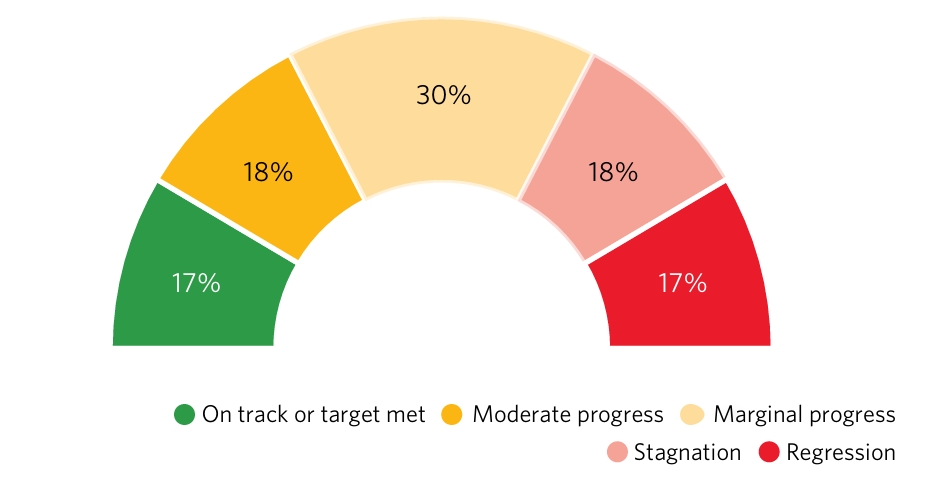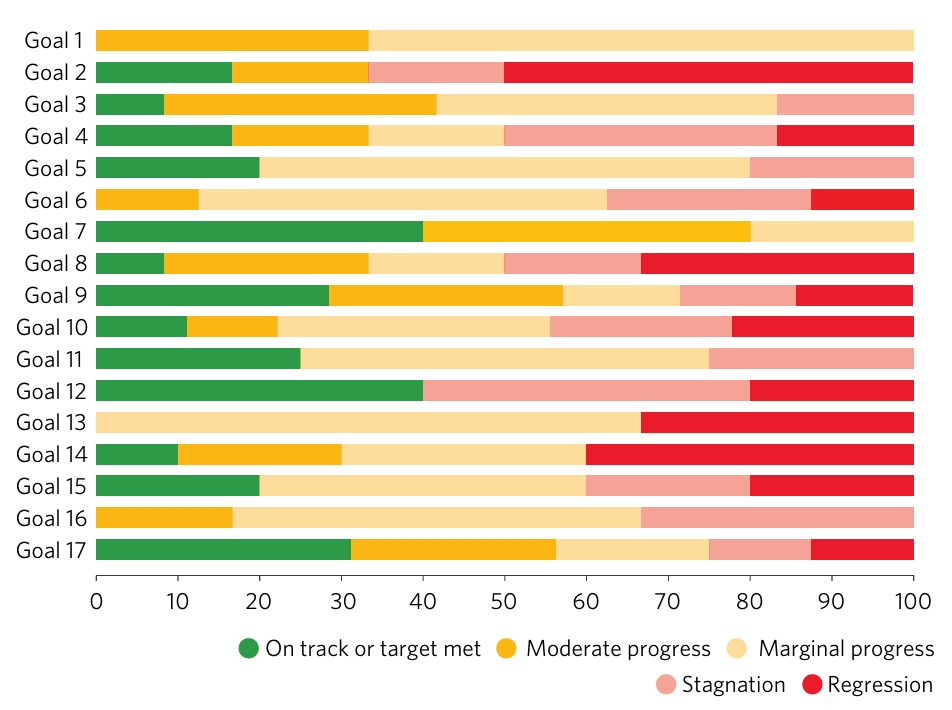The Sustainable Development Goals Report 2024

The Social Development Goals (SDG’s) are a set of 17 goals issued by the United Nations. These aim to use Artificial Intelligence to solve world-wide issues such as; climate change, poverty and education. Every year, the United Nations issue an annual report on the SDG’s to provide an update on the progress over the year. This article covers the most recent report published in June 2024.
The focus of these SDG’s is to ensure its implementation by 2030. Due to this, member states have declared their determination “to make all efforts to implement the 2030 Agenda and achieve the Sustainable Development Goals by the target year of 2030”.
Alongside this report, I will be discussing the “AI For Good” report issued by the International Telecommunication Union. This report looks into the specific use of AI in regards to each of these SDG goals.
The 17 goals
No Poverty
Zero Hunger
Good Health and Wellbeing
Quality Education
Gender Equality
Clean Water and Sanitation
Affordable and Clean Energy
Decent Work and economic growth
Industry, Innovation and Infrastructure
Reduced Inequalities
Sustainable cities and communities
Responsible consumption and production
Climate Action
Life below water
Life on Land
Peace, Justice and Strong Institutions
Partnerships for the goals
What do these goals represent?
Each of these 17 goals represent a global issue which the United Nations are trying to improve through the help of Artificial Intelligence. Whilst the SDG’s do not explicitly state the involvement of Artificial Intelligence, it does mention the use of digital technologies which requires the use of AI for the implementation of these goals. It is this area I will explicitly focus on throughout this article. To provide further information on the integration of AI in the SDG’s I will incorporate and discuss information from the “AI For Good report.”
One area covered in the SDG’s 2024 report is the ability to harness data. The report states that the demand for data in SDG monitoring has led to the innovation of different data sources. Examples listed in the report include; Azerbaijan who use remote sensing to monitor the coverage of important sites for mountain biodiversity. In addition, Colombia and Malaysia have integrated geospatial and population data to estimate the amount of people living within 2 kilometres of an all-season road. It is with these examples that we can see how countries across the world are now beginning to invest in advanced technologies and data sources. This investment will be critical to overcome the challenges faced in the 2030 agenda.
The report is urging for a global integration of data, across all areas of society before 2030. Due to this, Member States are motivated to involve individuals in data production. Projects include Copenhagen’s Framework on Citizen Data by the Collaborative on Citizen Data which supports such engagement. This is a positive step towards world-wide collaboration. With AI and technology advancing it is vital individuals are aware of data’s potential to ensure they are not left behind. This links to an essential goal of the 2024 report, “No one shall be left behind” and a goal which strives for this global collaboration.
Tracking the improvement or decline of each of these 17 goals, requires the use of open, thorough and accurate data. Data is therefore at the core of this report
AI For Good Report
Due to the lack of improvement in some of the United Nations goals, there is a call for AI to come and address these challenges and reverse the trend in order to meet the 2030 agenda
1- Reducing Poverty- One of the biggest constraints with AI and technology is its cost which many can not afford to implement into their operations. To this, implementing a sharing model or reducing costs overall could help mitigate this. Here is one use case: providing access to overlooked communities to market solutions to provide them with a new revenue stream and higher financial resilience.
2. No Hunger- AI can have wide applications across farming and food production. Such as the use of precision farming to optimize the use of resources. This would allow for an optimized strategy and contribute to improved crop quality. One use case involves improving AI instruments to improve the efficiency of farming practices and increase the quantity of food produced.
3- Wellbeing- Using AI instruments to improve the quality of life of patients and their families by generating new technology-driven solutions such as connected prosthetics. AI can also be used to reduce the costs of certain medications and further support those individuals in lower income areas.
4- Education- Implementing AI solutions to help map the educational needs of students in a geographical space to better plan school
locations.
5- Gender Equality- Designing an AI-driven transit safety app for Manila to Ensure Women’s Transport Safety. This is just one example of AI’s impact on gender equality and there are many more ways AI can be used to promote the equality of all individuals.
6- Clean Water- Using AI in wastewater management systems to improve forecasting of the system and reduce costs.
7- Affordable and Clean Energy- Using AI to optimize the supply and demand of the energy grid to improve efficiency and minimize waste.
8- Decent Work and Economic Growth- Implementing open-source AI solutions could help drive free access to educational content and information.
9- Industry, Innovation and Infrastructure- Using new AI technologies to further develop the AI technical ecosystem and help it be more efficient and more suitable for generating innovation.
10- Reduced Inequalities- Training AI to recognize biases in historical data to develop new solutions that are more inclusive.
11- Sustainable cities and communities- Developing smart cities that are less environmentally impactful, and more enjoyable
for the urban population using AI and technologies.
12- Responsible consumption and production- Monitoring environmental data with AI to drive sustainability reporting capacity for organizations.
13- Climate Action- Using AI to optimize the CO2 emissions of organizations from transport, distribution and logistics.
14- Life below Water- Monitoring biodiversity underwater using AI to give governments and organizations a tool to better protect it.
15- Life on Land- Using AI to review deforestation to assure to have precise information and make informed decisions.
16- Peace, Justice and Strong Institutions- Leveraging AI to assess whether some content accessed is deep fake or real information.
17- Partnerships for the Goals- Aligning AI development locally in line with external requirements such as the OECD Principles of AI.
As you can see, Artificial Intelligence has applications across all areas and is not limited to technology and software. It is for this reason that so many nations are beginning to implement these technologies to support their processes. The takeaway from this report is simple, the United Nations are not on track to meet their 2030 agenda, with so many targets off track, it is now that they will undoubtedly turn to AI to secure them back on track to meet their 2030 agenda targets.
I am aware that this article strictly covered the United Nations Sustainable Development Goals and little guidance was given on the “AI For Good” report. I have provided more guidance on this report here for you to access.

